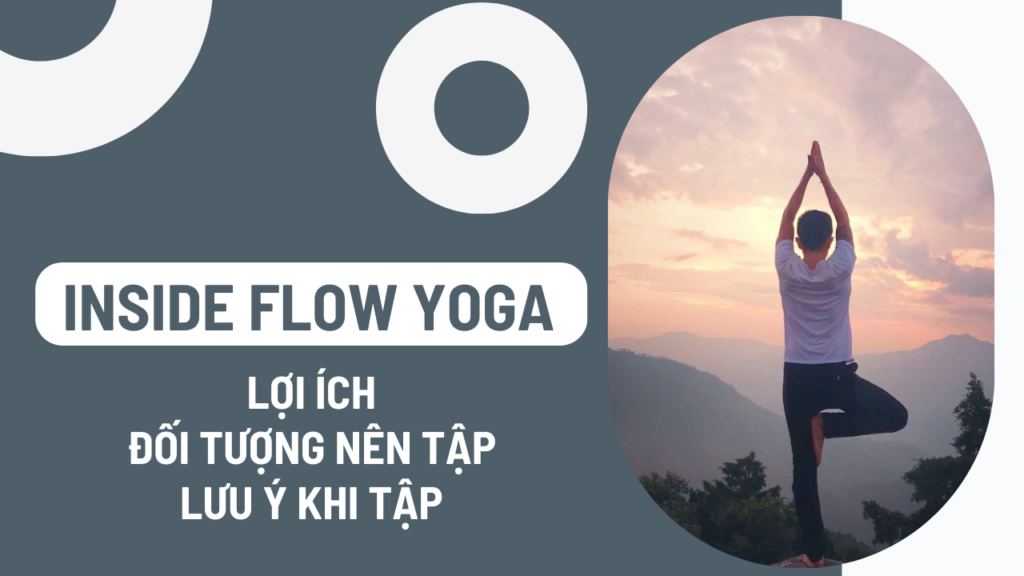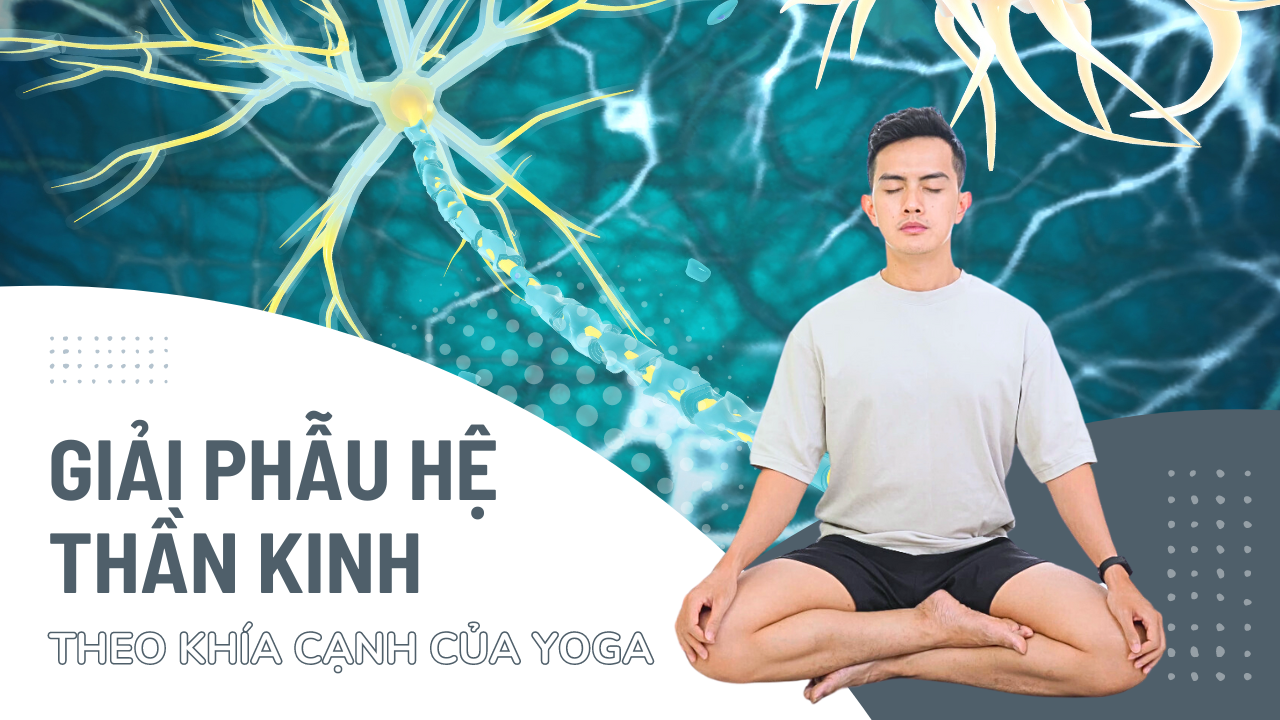Inside Flow Yoga is a unique style of Yoga that combines seamless movement and deep breathing. In this article, Nguyen will help you better understand what Inside Flow Yoga is, the characteristics and benefits of Inside Flow Yoga, as well as who is suitable to practice this Yoga style.
1. Overview of Inside Flow Yoga
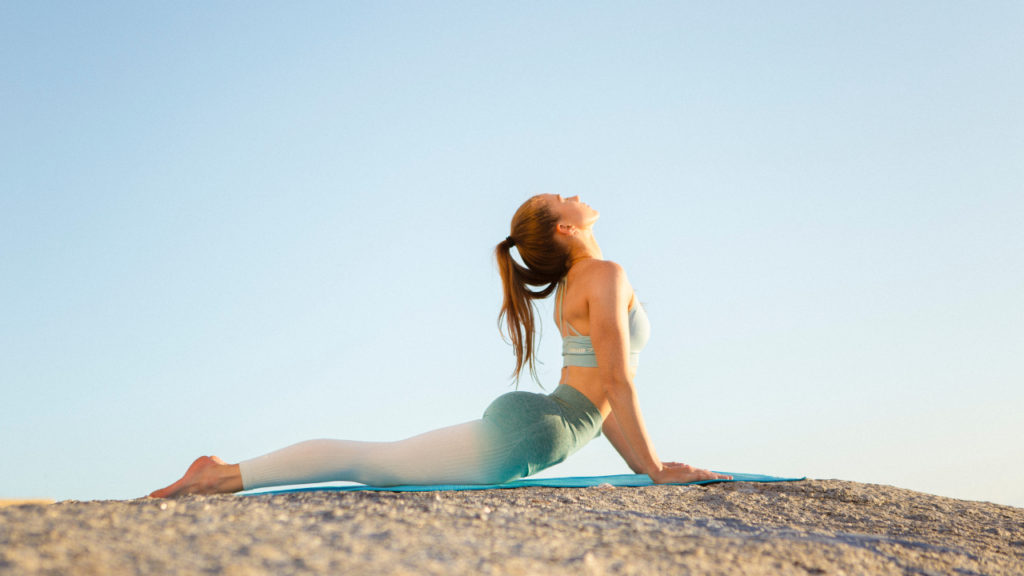
Insde Flow Yoga is a form of Dynamic Yoga, developed by famous yogini Bryce Yoga. This style combines seamless movements, deep breathing and intense concentration. The difference between Inside Flow Yoga and other types of Yoga is the emphasis on moving the body gracefully and softly according to the rhythm of the breath. The movements in Inside Flow Yoga are often interconnected, forming a flow of energy throughout the entire body.
The origin of Inside Flow Yoga originates from Vinyasa Yoga, but was developed and transformed by Bryce Yoga into a distinct style. Bryce combines knowledge of Yoga, meditation, physiology and anatomy to create a comprehensive Yoga system that helps unlock the potential of the body and mind.
2. Benefits of Inside Flow Yoga
Inside Flow Yoga brings many great benefits for physical and mental health. Regular exercise will help improve strength, flexibility, reduce stress, increase concentration and bring better sleep.
Improve strength and flexibility
The movements in Inside Flow Yoga help strengthen muscle strength, especially the core area. Moving continuously and gracefully helps improve the body's flexibility, helping the joints move more smoothly. A study published in the International Journal of Yoga showed that after 12 weeks of practicing Inside Flow Yoga, the test group's flexibility and muscle strength increased significantly.
Reduce stress and anxiety
Deep breathing and intense concentration in Inside Flow Yoga help reduce stress and anxiety. Focusing on breathing and feeling your body helps you temporarily put aside negative thoughts and brings a feeling of relaxation. A study in the journal Frontiers in Psychology found that Inside Flow Yoga can reduce levels of cortisol, the stress hormone, and increase feelings of well-being.
Increase concentration and mindfulness
The combination of movement and breathing in Inside Flow Yoga helps train concentration. Moving harmoniously and consciously helps us be fully present in the present moment (mindfulness). A study published in the Journal of Clinical Psychology showed that people who practice Inside Flow Yoga regularly have a higher ability to concentrate and are less distracted by external factors.
Supports better sleep
Inside Flow Yoga exercises, especially the relaxation part at the end of the session, help the body and mind calm down, making it easier to fall asleep. Research in the journal Sleep Science shows that people who practice Inside Flow Yoga regularly have better sleep quality, have less insomnia and sleep more deeply.
Enhance cardiovascular health
Continuous movements combined with deep breathing in Inside Flow Yoga help strengthen the heart and improve blood circulation. A study in the European Journal of Preventive Cardiology shows that practicing Inside Flow Yoga regularly can help lower blood pressure, reducing the risk of cardiovascular disease.
3. Who should practice Inside Flow Yoga?
Inside Flow Yoga is suitable for many people, from yoga beginners to experienced yogis:
Beginners practicing Yoga
The movements in Inside Flow Yoga can be adjusted to suit beginners. Inside Flow Yoga classes for beginners often focus on getting used to breathing, learning basic poses, and moving smoothly.
People who want to improve flexibility and strength
Inside Flow Yoga is the ideal choice for people who want to improve overall body flexibility and strength. Continuous movements help expand the body's range of motion, increasing endurance and flexibility for muscles and ligaments.
People need to reduce stress and increase concentration
With slow rhythms, deep breathing and intense concentration, Inside Flow Yoga helps reduce stress and anxiety, helping the mind become calmer and clearer [14]. If you are often stressed, Inside Flow Yoga is a great way to relax and recharge.
People with sleep problems
Inside Flow Yoga can help improve sleep quality thanks to relaxation exercises and deep breathing before going to bed. Many people who practice Inside Flow Yoga regularly say they sleep more deeply and soundly, and wake up feeling refreshed.
4. Basic postures in Inside Flow Yoga
An Inside Flow Yoga session usually includes many different poses, arranged in a logical sequence to form a seamless flow. Here are some of the most basic and important poses in Inside Flow Yoga:
Mountain pose

Mountain pose is the foundation for most of the other poses in Inside Flow Yoga. This exercise helps increase focus, improve posture, and aid deep breathing.
Doing:
- Stand straight, legs lightly touching each other
- Shoulders relaxed, back straight, stomach slightly tucked in
- Eyes closed or looking forward, breathing evenly
- Hold the pose for 5-10 breaths
Note:
- Do not hunch over or puff out your chest excessively
- Knees are straight but not locked
- Put your weight evenly on both feet
Warrior poses
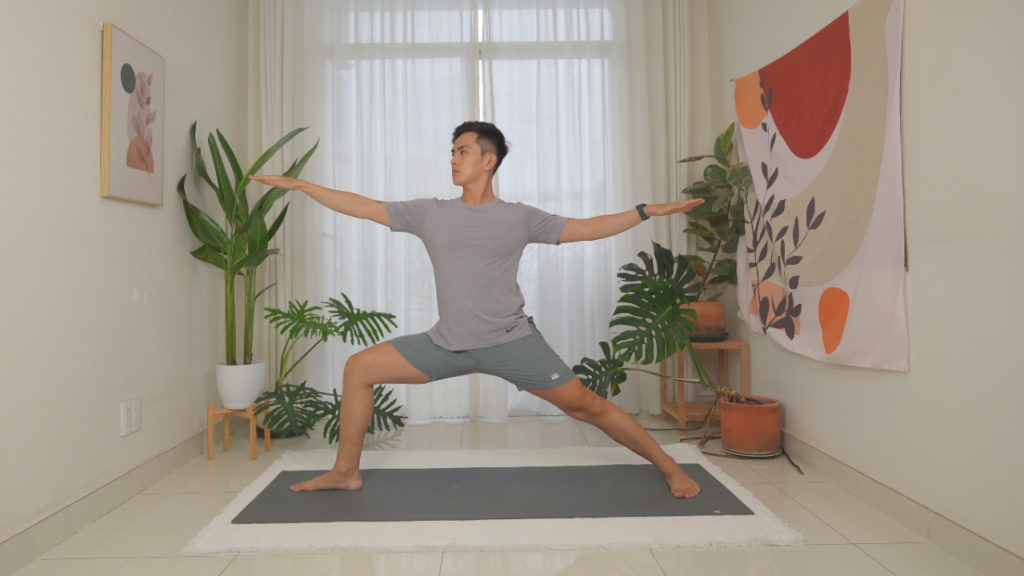
Variations of warrior pose help strengthen the legs, glutes, and core. At the same time, they also help expand the upper body and increase concentration.
How to do Warrior:
- Step left foot forward, feet hip-width apart
- Rotate the back foot 45-60 degrees
- The front knee is perpendicular, the knee is in line with the ankle
- Slightly raise your arms to shoulder level, palms facing each other
- Hold the position for 5-10 breaths, then switch sides
Note:
- Keep your spine straight, shoulders and hips square
- Do not let the front knee exceed the ball of the foot
- Remember to breathe deeply and evenly throughout the movement
Downward-facing dog pose
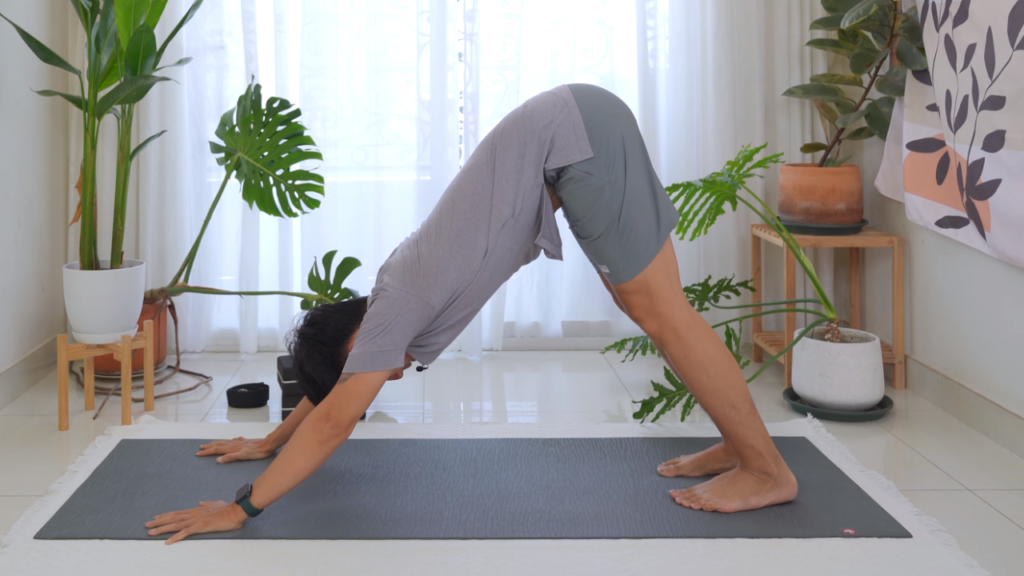
Downward-facing dog pose is one of the foundation exercises in Inside Flow Yoga. It helps stretch the entire body, especially the back of the legs and back.
Doing:
- Kneel with your hands and feet on the mat, arms shoulder-width apart
- Stretch your legs back, tiptoes up high
- Push your chest toward your thighs, lengthening your spine
- Heels facing down on mat, knees straight but not locked
- Hold the pose for 5-10 breaths
Note:
- Distribute body weight evenly between arms and legs
- Turn your elbows in, keeping your shoulders away from your ears
- If there is tension in the back of the leg, the knee may be slightly bent
5. Notes when practicing Inside Flow Yoga
To practice Inside Flow Yoga effectively and safely, you need to keep in mind the following points:
- Prepare an exercise mat and comfortable, sweat-absorbent clothes
- Choose a quiet, airy space to concentrate better
- Practice deep, regulated breathing throughout the exercise
- Listen to your body, don't overexert yourself and cause injury
- Maintain intense focus on movements and breathing
Above is basic information about Inside Flow Yoga, a Yoga style that harmoniously combines movement and breathing, bringing many benefits to physical and mental health. Whether you are a beginner or experienced with Yoga, Inside Flow Yoga is a great choice to explore the potential of your body and mind. To learn more about Inside Flow Yoga as well as other Yoga styles, visit the Nguyen Yoga website and read useful articles about Yoga and health.

